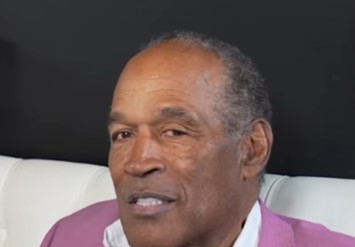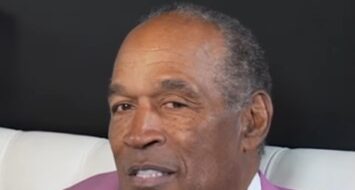THE ATTORNEYS IN O. J. SIMPSON’S TRIAL

O J SIMPSON
Lawyers in O J Simpson trial saw a criminal prosecution that took place in 1995. O.J. Simpson, a former college and professional football player, was acquitted of the murders of his ex-wife Nicole Brown Simpson and friend Ronald Goldman. It is widely considered to be one of the most infamous criminal trials in the history of the United States.
Simpson became the primary suspect almost immediately after the stabbing deaths of his ex-wife and Goldman, which occurred on the evening of June 12, 1994, outside of Goldman’s condominium in Los Angeles. Simpson chose to conceal himself in the rear of a sport utility vehicle driven by his friend A.C. Cowlings on June 17, rather than hand himself over to the authorities because he had been informed that charges were about to be filed against him.
Profiles of O J Simpson’s Trial Attorneys
O J Simpson was instantly identified as the primary suspect after the deaths of his ex-wife and Goldman, who were both stabbed to death outside of Goldman’s condominium in Los Angeles on the evening of June 12, 1994. Once Simpson was informed that charges were going to be brought against him, he chose to conceal himself in the trunk of a sport utility vehicle driven by his friend A.C. Cowlings on June 17 rather than hand himself over to the authorities.
Officials from the law enforcement agency followed the vehicle at a slow speed for more than an hour after they were informed that Simpson had a pistol to his own head. A large number of Simpson’s supporters lined the streets in order to show their support for him during the attempted “escape” that was broadcast live across the nation and seen by an estimated 95 million viewers. Simpson’s arrest and subsequent detention by law enforcement took place at his residence in Brentwood, California, where the incident came to a close.
o j simpson court case: LAWYERS IN O J SIMPSON
Listed below are some of the most well-known individuals who were instrumental in the o O J Simpson court case.
Marcia Clark (Prosecutor)

Having spent years in the Special Trials Unit, which handled some of the most complicated investigations, Clark became the main prosecutor of the Simpson murder trial after becoming an ace trial lawyer for the Los Angeles District Attorney’s office. The harsh and confrontational courtroom demeanor of Clark, who was characterized as cold and calculated, alienated many Black female jurors.
After she hired a consultant who advised her to speak more gently and wear pastels, she still felt the media’s portrayal of her as furious and stiff. Clark, a mother, and divorcee, tried to improve her image by acting superficially, but things took a natural turn for the better when she sobbed to presiding Judge Ito that she had to leave the courtroom to care for her two sons during the lengthy nighttime trial. Clark stepped down as district attorney for Los Angeles after losing the Simpson case.
Christopher Darden (Prosecutor)
Christopher Darden, who was born on July 7, 1956, was the coordinating counsel. In his nearly three decades as a prosecutor for Los Angeles County, Darden has brought nineteen homicide cases to a jury trial. Darden joined the prosecution team after serving for six and a half years as a deputy district attorney in the Special Investigations Division after becoming a deputy in 1981.
The law school at Hastings College and San Jose State University both count him among their alums. Even though he was Clark’s co-prosecutor, Darden had little trial experience. But, as a Black man on a mostly Black jury, his presence was crucial in disproving claims that the prosecution’s generally all-white staff had racist motives in prosecuting Simpson.
Darden made great strides as the trial went on, despite his initial struggles and what seemed like intimidation from Cochran. Unfortunately, his demand that Simpson try on the notorious bloody gloves—which turned out to be too small for the accused’s hands—was a critical blunder. Darden took a leave of absence after the Simpson trial, which saddened him. He was renowned for being easily angered.
F. Lee Bailey
During the course of the trial, Bailey became probably the most well-known for his cross-examination of LAPD detective Mark Fuhrman, who had been accused of using the N-word in the past.
Additionally, he had a confrontation with prosecutor Marcia Clark, in which she sarcastically questioned the size of his masculinity. Bailey’s handling of a drug smuggler client’s $6 million in stock shares in 1994 led to his disbarment in Florida in 2001 and in Massachusetts in 2002. At the end of the day, Bailey was unable to reclaim his licenses and instead began working as a consultant. The year 2021 saw the publication of his book, which was titled The Truth about the O. J. Simpson Trial: By the Architect of the Defense. Later on in the same year, he passed away.
Barry Scheck
The contentious claim made by Scheck during the Simpson trial that the DNA gathered during the inquiry was either planted by the police or rendered invalid by contamination made him most well-known.
Garcetti Gil
On the other hand, in the years that have passed, he has acquired yet another legacy, as he was the co-founder of the Innocence Project in 1992 with another Simpson lawyer named Peter Neufeld. Those who have been wrongfully accused of crimes, such as John Restivo, Dennis Halstead, and John Kogut, who were sentenced to 18 years in prison for the rape and murder of Theresa Fusco in 1985, have been exonerated by this non-profit organization through the use of DNA evidence.
The O.J. Simpson trial started when Gil Garcetti, who is now 82 years old, was serving as the District Attorney for Los Angeles County for the first time. He had been in office for two years. In the year 1996, he was successful in reelection to the District Attorney’s office; however, he was unsuccessful in the year 2000.
Following his departure from public office, he has contributed to a local ethics committee, worked as a fellow at the John F. Kennedy School of Government at Harvard University, and served as a consulting producer for the television series The Closer and the show Major Crimes on TNT. In addition to serving as the Mayor of Los Angeles, his son Eric Garcetti is currently serving as the Ambassador to India.
Lisa Kahn
Lisa Kahn, who was born on December 28, 1957, was the district attorney’s office’s DNA coordinator. Being a member of the Organized Crime Division, she became an employee of the District Attorney’s Office ten years before the case. In California, hers was the first DNA evidential jury trial, and she was successful in prosecuting it. Not only did she earn a degree from USC, but she also earned a law degree from Southwestern University School of Law.
Cheri Lewis
In the prosecution’s motions and pleadings, Cheri Lewis who was born on August 8, 1952—helped with research and preparation. During her five years at the District Attorney’s Office, she has achieved the accomplished feat of successfully trying eight murder cases. The office of the city attorney in Los Angeles was her prior employer. For her undergraduate degree, she attended California State University, Northridge, and for her law degree, she attended the San Fernando Valley Campus of the University of La Verne College of Law.
Johnnie Cochran (Defense)
After advancing his career in the criminal division of the Los Angeles County District Attorney’s Office, Cochran went on to represent some of the most famous people in the entertainment industry, such as Michael Jackson and James Brown. Simpson was the one who approached Shapiro with the idea of recruiting Cochran to join the team in 1994. At the time, he was widely regarded as one of the most accomplished trial attorneys in the country.
As soon as Cochran took charge of Simpson’s defense plan and succeeded in pushing Shapiro to the side, he began to court the attention of the media and the courtroom. Through his controversial use of the race card, he attempted to garner sympathy for Simpson by employing his “Black preacher” method of operation. The famous line “if it doesn’t fit, one must acquit” was spoken by Cochran after the prosecutor Darden made the error of insisting that Simpson try on the bloody gloves that were ill-fitting. Simpson’s defense gained a significant edge as a result of that incident, which turned out to be a pivotal moment in the trial.
Robert Shapiro
Robert Shapiro, who was born on 9-24-42, has a stellar resume that includes Johnny Carson and John Z. DeLorean as satisfied clientele. He has served as the main counsel in around ten instances involving murder, and he was successful in reducing the charge of murder against Christian Brando, the son of Marlon Brando, to that of voluntary manslaughter. Having completed his studies at Loyola Law School and UCLA, Shapiro has previously served as a Deputy District Attorney.
When Shapiro first started representing Simpson, he found himself in a position where he had to compete with other attorneys on his team in order to maintain his leadership role. These attorneys were eager to shine more than he did.
It had been reported that co-defense attorney F. Lee Bailey disclosed information to the media regarding Shapiro’s ego. This is only one of the many evidence that there was conflict inside the group. However, the blow that knocked Shapiro out of the top position was when Cochran gained Simpson’s favor by visiting him in jail. This was something that Shapiro preferred not to do with any of his clients due to the fact that it was considered inappropriate.
Shapiro became vocally critical of the techniques that his team had chosen to implement when Cochran took over as lead counsel. He also made an effort to separate himself from those efforts. Later on, he would reveal to Barbara Walters that not only did they play the race card, but they also dealt it from the bottom of the deck.
crime scene o j simpson
- One of the most investigated and contentious crime scenes in U.S. history is the one involving O.J. Simpson. A media blitz and a widely covered trial ensued after the violent killings of Ronald Goldman and Nicole Brown Simpson outside of Nicole’s Brentwood, Los Angeles, apartment on June 12, 1994. Elements Crucial to the O.J. Simpson Crime Scene
- Just after midnight on June 13, 1994, the remains of Nicole Brown Simpson and Ronald Goldman were found.
- The 875 South Bundy Drive apartment of Nicole Brown Simpson in Brentwood, Los Angeles was the site of the crime.
- An ex-wife of O.J. Simpson, Nicole Brown Simpson was discovered in a fetal position, wearing a black dress, with many stab wounds, one of which was a severe cut to the neck.
- A few feet away, Ronald Goldman—Nicole’s friend—was discovered with several knife wounds, indicating that he was involved in a conflict.
- The discovery of a bloodstained leather glove at the site of the murder, which matched a glove discovered at O.J. Simpson’s house, was a crucial piece of evidence.
- The murder site, Simpson’s house, and his Bronco all had bloodstains that matched O.J. Simpson’s DNA.
- Footprints The footprints discovered at the site were those of Bruno Magli shoes, which were often associated with Simpson.
- The corpses and garments of the victims had hair and fibers that were found to match those of Simpson.
- The examination of Simpson’s DNA was important in connecting him to the murder scene via blood evidence. On the other side, the defense contended that the LAPD tampered with or otherwise mishandled evidence.
- The victims’ horrific injuries, including several stab wounds and defensive wounds, were detailed in the autopsy reports.
